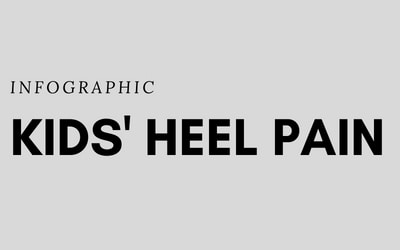


Ingrown toenail surgery—is it right for you?

Ingrown toenail surgery—is it right for you?
What does ingrown toenail surgery involve?
Surgery to address an ingrown toenail (onychocryptosis) involves removing the bothersome nail and applying a chemical to prevent the nail from growing back.
In some instances it may be necessary or most beneficial to remove a small section of nail at one or both sides, but on the odd occasion the entire nail (total nail avulsion) will be removed.
It is a quick and simple procedure than is essentially pain free as it is performed with an injection of local anaesthetic.
Following surgery the toe is dressed and generally speaking there is little, if any, pain or discomfort. You may expect some throbbing that night or discomfort but this is most often managed well with paracetamol.
When is toenail surgery the best option?
Ingrown toenail surgery should not be considered first-line treatment for an ingrown toenail. It can be considered when:
- Other non-surgical methods have been exhausted
- The nail is involuted or curved
- Ingrown toenail is problematic, painful or recurring
- You understand the implications and potential complication of surgery
- You have discussed any concerns with your podiatrist
What are the advantages of clinic-based toenail surgery?
- No time in hospital
- No Sutures / stitches required – all completed under the nail plate
- No more recurrent ingrown toenails
- Pain free
- Minimal time off work
- Reduced episodes of infection and lesions (weeping, bleeding)
- In the majority of cases, ingrown toenail surgery is very successful
Dr Brenden Brown, podiatrist and founder of A Step Ahead Foot + Ankle Care, says, “Nail surgeries are not new for podiatrists; we perform them on a regular basis. It is part of our training at University so we are well versed in this surgery. It is carried out in our clinic and, due to our high level of training, is a fairly simple procedure.
“I often describe this surgery as ‘relatively pain free’. It is wrong to say any surgical procedure is ‘completely pain free’ but as procedures go our patients report very little, if any, pain. In fact, patients are frequently surprised at just how pain free it actually is!
“This procedure can certainly be of benefit and is recommended for patients who have a history of infection or recurrent ingrown toenails. It’s also very helpful for patients with involuted or very curved nails and toenails with areas that seem to catch the skin on the side of the nail.
“Patients often suffer from an ingrown toenail for many years with little idea where to go to for help.
“The days of painful surgeries with patients regularly experience nail re-growth are gone. It’s also important to remember that what you see on YouTube and other social media sites is often the ‘most horrible’ and ‘most atrocious’. If it wasn’t so gruesome you probably wouldn’t have been so motivated to watch and it likely would have got the “views” it did!
Related articles:
5 hacks to keep ingrown toenails at bay
ABOUT US
A Step Ahead Foot + Ankle Care is one of Sydney’s leading foot and ankle clinics. Principal podiatrist and founder of A Step Ahead Dr Brenden Brown (AKA Dr Foot) has been taking care of people’s feet for more than 20 years.
With a background in sports medicine and having served as a former president of the Australasian Podiatry Council, Brenden is a wealth of information when it comes to foot and ankle care.
Got a question? Check out our Instagram profile #AskDrFoot
Tune into our Facebook page for regular live videos and updates on the latest foot and ankle advice from the experts.

5 hacks to keep ingrown toenails at bay
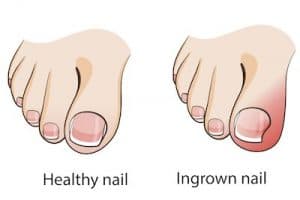
5 hacks to keep ingrown toenails at bay
What causes an ingrown toenail?
Ingrown toenail (known medically as onychocryptosis) is a condition where the edge of the toenail (most commonly on the big toe) pierces or catches on the skin as it grows up.
MYTH: Nails only grow upwards they do not on any occasion grow outwards towards the side.
There are several causes of an ingrown toenail but probably the most widespread is poor toenail-trimming technique. Cutting down the side of the nail is a major no-no. Why? Because even the smallest spike of nail can grow up and penetrate, or get caught on, the skin.
The ingrown slither of nail acts like a splinter; the skin around it thinks it’s a foreign body and becomes inflamed and infected.

5 hacks to prevent ingrown toenails
- Clip with caution. Trim toenails straight across. DO NOT cut down the sides of the nail and refrain from cutting nails too short
- Refrain from ripping the nails down the sides. We have all done this! You cut but you can’t get that last bit of nail, so you abandon the clippers and rip the last piece down the side. This leaves a sharp spike, which may not be painful now but in following days it will grow upwards and catch on the skin piercing it creating the subsequent infection and PAIN!
- Ditch footwear that is too tight or constricts the toes from moving. This can push the nail into the skin causing irritation and infection
- Steer clear of unqualified people offering to remove ingrown toenails. While this may sound somewhat self-serving, there are an increasing number of nail salons offering to perform this sort of work. Removing the nail breaks the skin barrier, which can easily become infected. Whilst your podiatrist makes it look easy that is because it’s what they have been trained to do and complete on a regular basis.
- Adhere to best-practice foot care by keeping feet clean and dry to avoid weak, splitting nail and fungal infections.
How to fix ingrown toenails — at home
To treat an ingrown toenail at home you can try: Cutting the nails straight across and applying an antibiotic cream to help reduce the risk of infection and subsequent inflammation. You can also use a nail file to round the corners!
MYTH: Cutting a V in your toenail will not make it grow inwards; nails only grow upwards. While the V may look like it’s closing in, this is an illusion as you are trimming the top of the V, making it appear like the V is getting smaller over time.
Applying a small piece of cotton wool between the ingrown nail and the skin can help life the nail, hopefully clearing it and preventing the nail from piercing the skin again.
Avoid wearing high heels, pointed or tight fitting shoes as these can place pressure on the affected area, potentially delaying healing.
The professional approach
Dr Brenden Brown, podiatrist and founder of A Step Ahead Foot + Ankle Care, says, “If the toenail turns into a monster and becomes red, angry or infected—It’s definitely time to seek professional advice.
“A podiatrist can easily treat an ingrown toenail by removing the troublesome spike of nail. In most cases this is a quick (takes minutes) and simple procedure, which is completely painless.
“Following the removal of the nail spile, the toenail area is cleaned and, if infection has been present, the toe will be dressed.
“In extreme cases, toenail surgery may be required. This will generally only happen if the patient has a repeated history of recurrent in grown nails or if the nails shape means it requires removal of that section, such as when it is involuted or excessively curved.
“It is more rare than most people think to remove a whole nail as we can manage these well conservatively”
Related articles:
Ingrown toenail surgery—is it right for you?
ABOUT US
A Step Ahead Foot + Ankle Care is one of Sydney’s leading foot and ankle clinics. Principal podiatrist and founder of A Step Ahead Dr Brenden Brown (AKA Dr Foot) has been taking care of people’s feet for more than 20 years.
With a background in sports medicine and having served as a former president of the Australasian Podiatry Council, Brenden is a wealth of information when it comes to foot and ankle care.
Got a question? Check out our Instagram profile #AskDrFoot
Tune into our Facebook page for regular live videos and updates on the latest foot and ankle advice from the experts.

10 things you should know about heel pain
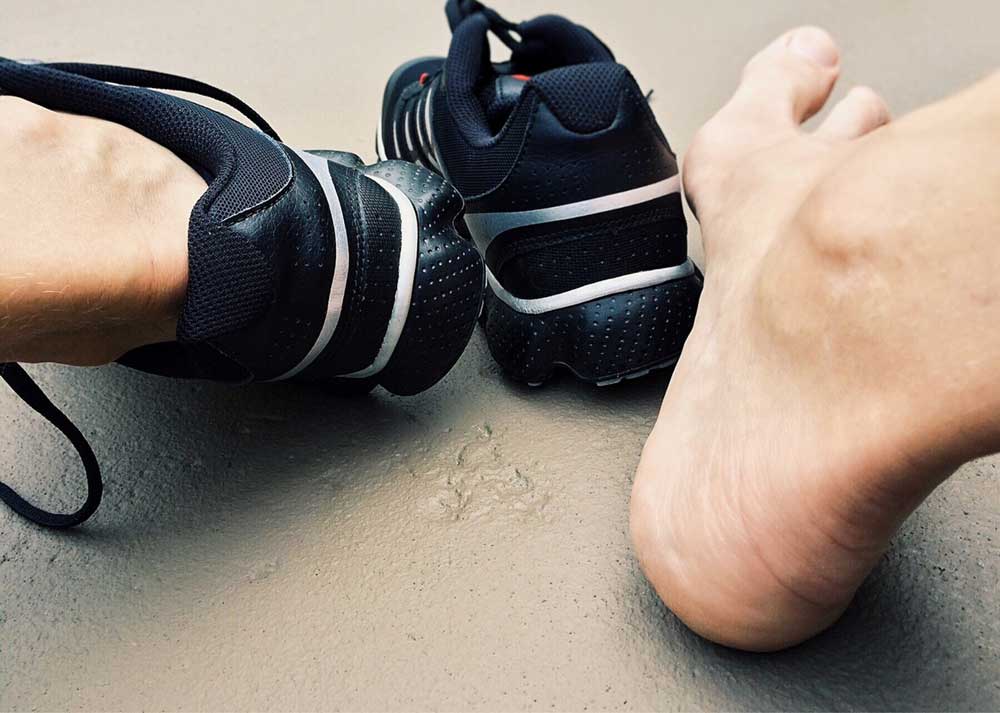
10 things you should know about heel pain
Heel pain is common but that doesn’t make it any less painful or less frustrating to live with. While the causes of heel pain can vary, the most popular culprit is a condition called plantar fasciitis (also referred to as heel pain and runner’s heel).
There are many cases of misunderstood heel pain—either because a proper diagnosis hasn’t been sought or the incorrect information has been given out. With a myriad of myths circulating about heel pain, it’s essential to get the right advice.
10 things you should know about heel pain
Bruising isn’t always the cause
“Heel pain is commonly linked to a bruised heel; but in fact an over-stretching of the fibrous tissue in the foot causes plantar fasciitis. It can also be incorrectly diagnosed as heel spurs or achilles tendonitis,” says podiatrist and founder of A Step Ahead Foot + Ankle Care Dr Brenden Brown.
Rest is not the best treatment
Rather than seeking professional help, many people suffering from heel pain will ignore their condition—hoping rest and time will cure it. If left untreated plantar fasciitis can last years.
Ignoring heel pain can lead to other health concerns
Untreated plantar fasciitis can further aggravate the foot, resulting in increased swelling. It can also lead to other medical problems affecting the hips, back and knees.
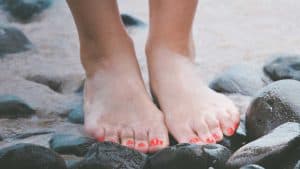
Barefoot is not best
Going barefoot might seem like the natural thing to do but walking around without shoes puts additional strain on the plantar fascia—particularly first thing in the morning, when the muscles and tissues are tight.
Cushioning offers comfort but not a cure
People commonly opt for a foam or silicone heel cushioning as a treatment for heel pain. Yes, this might provide some temporary comfort, but it won’t cure the condition.
Not all orthotics are equal
Hard, rigid orthotics are not only uncomfortable, they will do nothing for your foot pain. They might actually cause you more pain. Soft pliable orthotics are designed to support the foot while allowing the natural movement. However, orthotics alone won’t heel your feet pain. Talk to one of our podiatrist about the best orthotics and the different therapies that can help rehabilitate damaged tissue.
Fancy footwear isn’t always the answer
Thongs, trendy trainers or even fancy footwear with special arches won’t cure heel pain. Yet choice of shoe is important. A shoe that has a firm shell and a small amount of structured cushioning works best. The shoe should NEVER bend in the middle. Before heading out to pick up a new pair of shoes, chat to one of our podiatrists to get the right advice—as well as a detailed solution that includes other treatment options.
Injections aren’t the only option
Cortisone injections can be painful and evidence suggests they don’t work. In fact, one study showed that 3 months after having a cortisone injection more than 55% of people had the same pain. Another study revealed that injections of saline and cortisone both gave exactly the same result!
Heel pain can be prevented
Prevention is always the best cure and there are a number of ways to help ward off heel pain including:
- Maintaining a healthy weight
- Stretching before exercising and wearing appropriate footwear with supportive heels and shock-absorbent soles
- Avoiding wearing ill-fitting and second-hand shoes
- Avoiding going barefoot
Plantar fasciitis can be cured
The first step towards treatment should be a proper diagnosis from a podiatrist. The best approach to heel pain should be a multi-pronged plan that might include orthotics, professional advice and therapy, such as shockwave treatment.
To find out more about plantar fasciitis visit: heelpaindoctor.com.au or to obtain a diagnosis contact A Step Ahead Foot + Ankle Care today.
A Step Ahead Foot + Ankle Care is one of Sydney’s leading foot and ankle clinics. Principal podiatrist and founder of A Step Ahead Dr Brenden Brown (AKA Dr Foot) has been taking care of people’s feet for more than 20 years. With a background in sports medicine and having served as a former president of the Australasian Podiatry Council, Brenden is a wealth of information when it comes to foot and ankle care.
You might also be interested in our Facebook live sessions:
6 reasons your heel pain is NOT getting better
Strength exercises to beat and prevent heel pain
Or head over to Coach Nine to hear what else Dr Brenden has to say about heel pain.





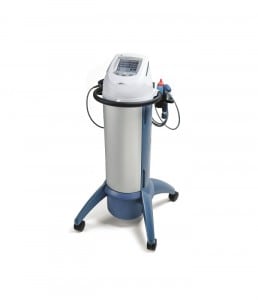





 Dr Brenden’s White paper report on the “6 Reasons You Won’t Beat Heal Pain” outlines what’s stopping you from beating this and tips on how to stop it in its tracks!
Dr Brenden’s White paper report on the “6 Reasons You Won’t Beat Heal Pain” outlines what’s stopping you from beating this and tips on how to stop it in its tracks!